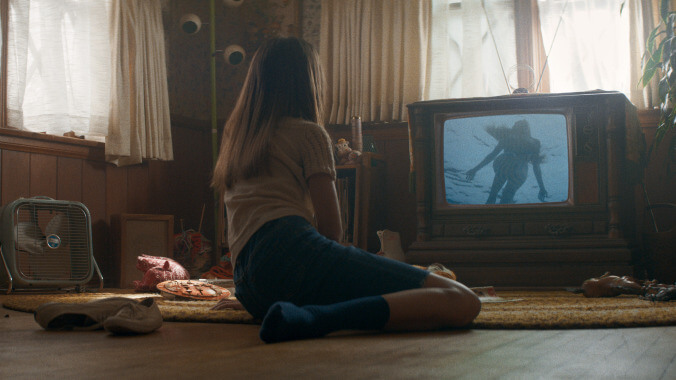Netflix explores the visual essay’s potential with the David Fincher-produced Voir
Ironically, the most effective installments of this series exploring the transformative power of cinema are also the most traditional

What makes visual essays notably different from their written brethren? The idea of images accompanying an argument or a story is nothing new, but with the rise of YouTube, the format has become much more democratized from the days when PBS leavened chats between Bill Moyers and Joseph Campbell with still frames and video clips germane to the discussion. So Voir, the new six-part series produced by David Fincher and streaming on Netflix, is mostly notable for how familiar it feels. In the era of explainer videos for every subject and stylized true-crime reenactments on a hundred channels, the only real difference here is slightly better production values.
With the average installment running just under 20 minutes, this short collection of “visual essays… for the love of cinema” (as they’re described in the opening credits) are just that—TED talk-style arguments overlaying visual aids in the form of movie clips. This isn’t surprising, given two of the main contributors, Taylor Ramos and Tony Zhou, spent several years doing exactly these kinds of videos themselves, under the name Every Frame A Painting. Voir feels like the continuation of that project, albeit with some collaborators bearing rather different takes on the material.
The series saves the best for last. Walter Chaw writes and narrates “Profane And Profound,” which makes the case for Walter Hill’s 48 Hours as a landmark—not of buddy comedies, as it’s usually pegged, but as a treatise on racism in the United States. Connecting the defense mechanisms Eddie Murphy’s Reggie Hammond employs against racist encounters and institutional oppression with his own experiences growing up Asian-American, he argues the film occupies a potent middle ground between the somber “message” movies of In The Heat Of The Night and the race-relation comedy of Richard Pryor and Gene Wilder’s films. Thoughtful and incisive, it does good work by making viewers look at a well-known property through a different lens.
On the other end of the spectrum is critic Sasha Stone’s initial offering. “Summer Of The Shark” is the most autobiographical and impressionistic of the episodes—less an argument about how Jaws changed cinema than a reflection on how coming of age alongside American blockbusters in the tumultuous ’70s and ’80s was its own kind of distinctive transformation. (“I needed distraction,” she says of these Hollywood spectacles, while noting how adolescence seemed to fragment her and her friends’ fascination with movies along gendered lines.) The only installment to feature impressionist reenactments of a personal narrative (directed by exec producer David Prior), it’s visually engaging, but less intellectually compelling.
The remaining episodes, from Zhou and Ramos (as well as one from critic Drew McWeeny), are all prototypical examples of the “explainer video” tradition—like Chaw’s entry, if not as strong. McWeeny narrates “But I Don’t Like Him,” a smart if not terribly challenging visual essay that uses Lawrence Of Arabia as the basis to explore the value of unlikable characters. (Shocking no one, Martin Scorsese’s oeuvre comes in for special consideration.) It’s stolidly in the Every Frame A Painting mold, providing just enough insight on the topic to feel fresh even for cinephiles likely well-acquainted with such arguments.
Zhou and Ramos’s three episodes are the most reliably straightforward, but they also end up providing the worst of the bunch. On the plus side, “The Duality Of Appeal” is a lively breakdown of how animation works to create appealing characters, going behind the scenes of the process to highlight the unusual challenges in creating two-dimensional characters—and how the shift to CG has changed the nature of the art in unexpected ways. And “The Ethics Of Revenge” finds Zhou using the superb Park Chan-wook film Lady Vengeance as a tool to break down the unwritten rules of revenge narratives, from the intentionally reductive victim characters to the sliding scale nature of the ethical cost.
Unfortunately, there’s also the fifth episode, “Film Vs. Television,” a comparatively facile look at the increasingly blurry line between cinema and television. Yes, movies employed technological gimmickry and big-money allowances to compete with TV, but the essay doesn’t enlighten, and ends with a limp shrug—horses for courses, and all that. Still, at least it doubles as a meta comment on this slim but mostly engaging docuseries; when it comes to choosing TV over film, Ramos argues, “The tradeoff is that you might not get an ending that satisfies you.” Luckily for Voir, it ends on Chaw’s intriguing “Profane And Profound” story, not this one.